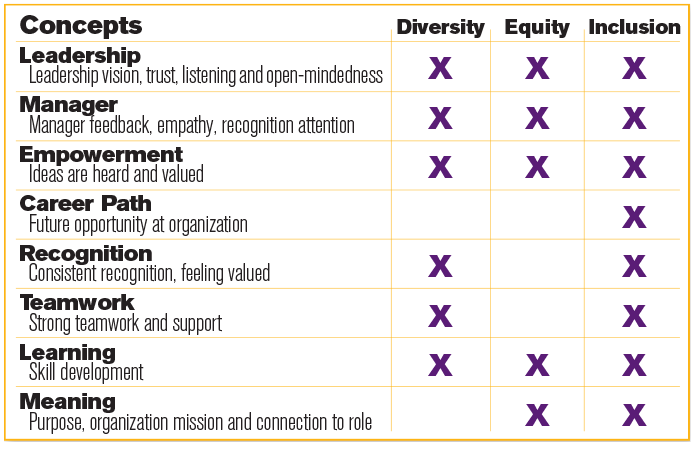How to make DEI a mainstream focus
Feb 22, 2022
Written by: Brad Shuck, Ph. D., Professor of Human Resources and Organizational Development, University of Louisville, Co-Founder, OrgVitals; and Amy Stern, Managing Director, Research and Strategy, BI WORLDWIDE
(View Author Bio)
For every component of business, thoughtfully considering how to approach it through the lens of diversity, equity and inclusion is ultimately what will help create the solid company culture that brings strategy to life in every day experiences.

__________
In 2020 and 2021, the critical role of diversity, equity and inclusion was elevated.
__________
While some companies had already started their DEI journey, many others took a first step during this time and made a statement to show their commitment to DEI such as hiring a Chief Diversity Officer, bringing in outside experts to form a strategic plan or providing training opportunities. Many leaders were still figuring out what it meant to drive DEI in multiple ways throughout their organization.
While strategy is an exceptionally important foundation, what employees need to see now is companies moving beyond strategy, statements and training to take action and show real progress. And not simply as part of a program or off on the fringe – they need to see it seamlessly incorporated into the culture they experience every day.
For leaders, it starts with understanding what it means to have a diverse, equitable and inclusive work culture and work population, as well as how to apply it on multiple levels. Think about: How is it strategic? How are we being proactive? How are we integrating it? Are there people in our organization whose voices are not heard that we need to include in the conversation?
From there, how do you move from strategy to the day-to-day behaviors and activities that create real culture change? To help identify which daily actions encourage diversity, create equity and foster inclusion, we surveyed employees to understand current perceptions around company DEI efforts, such as:
• Is the employee population diverse and does the company value diversity?
• Are there equitable opportunities for employees?
• Do employees feel included?
For those employees whose companies rated strongly in these areas, we were able to pinpoint which aspects of culture led to these outcomes and which area(s) of DEI they each impact.

While none of these are new concepts, what is new is looking at them through the lens of diversity, equity and inclusion. For example, when we’re doing things to empower employees, making them feel their ideas are heard and valued, we need to make sure we’re considering diverse perspectives, perhaps ones we haven’t considered before, and providing equitable opportunities for those ideas to be heard.
For every component of business, thoughtfully considering how to approach it through the lens of diversity, equity and inclusion is ultimately what will help create the solid company culture that brings strategy to life in every day experiences.
The best way to get started is to get in touch.



















